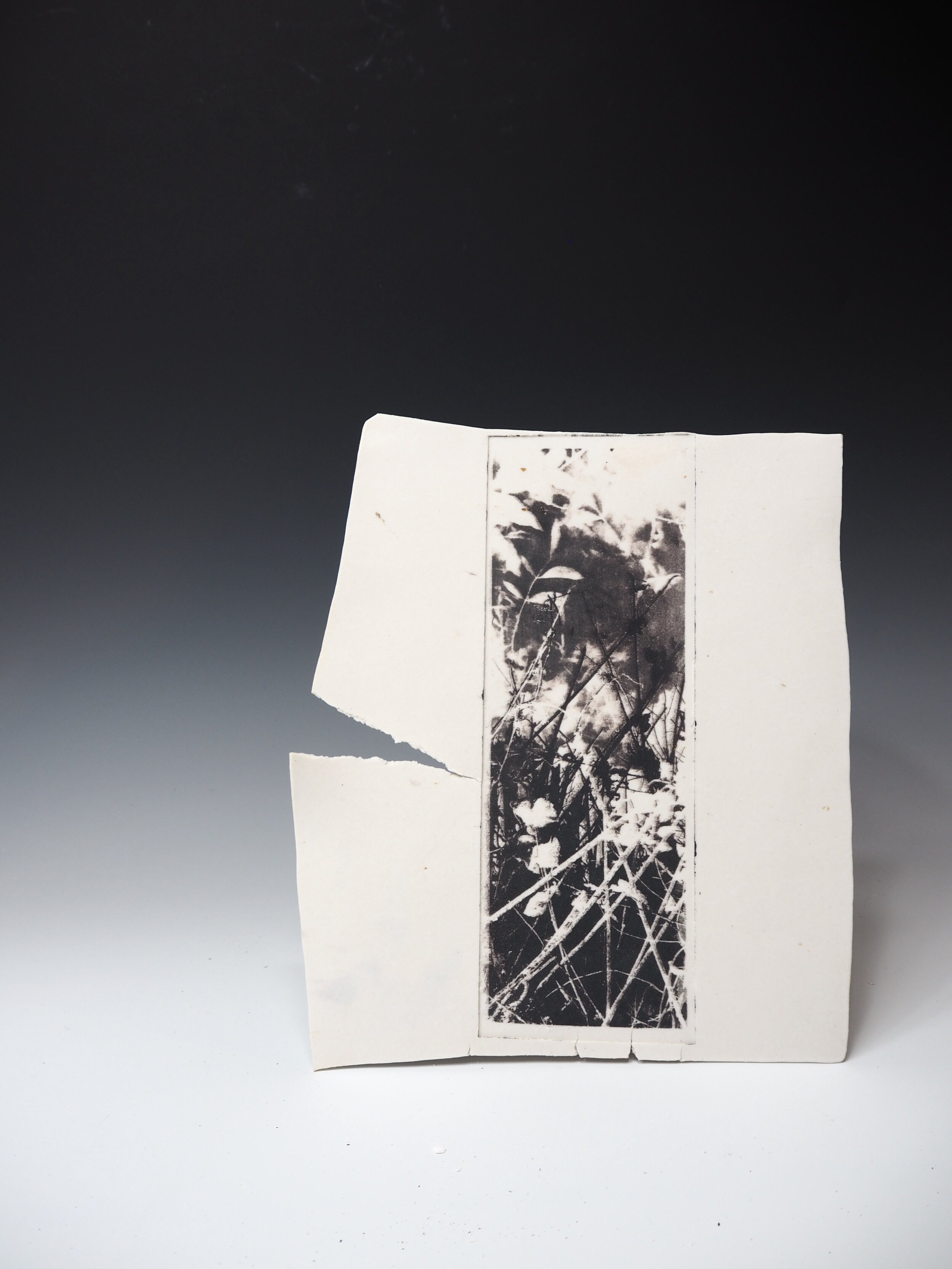My practice has always seemed divided by the fact of 2 and 3 dimensions. There are the sketchbooks I fill with photographs, drawings and prints; and the ceramic work which feeds off this accumulation of material. Finding a process which enabled me to combine these two areas has been enormously exciting. Photographing the landscape where I live and turning these images into photo etching plates, led to some intriguing images on paper.
The depth of the engraved image led me to wonder whether it would be possible to repeat the process on paper clay. The book ‘Ceramics and Print’ was very useful on the practical details of printing onto wet clay. It is crucial that the paper clay slabs are at the right consistency- too wet and the etching plate sticks to the clay, too dry and the clay slab splits and cracks.
I mixed 3 inks using a mixture of copperplate oil, manganese dioxide, black iron oxide and black body stain. Using a small off-cut of the larger plate, I trialed these 3 inks on porcelain slabs. The results were very exciting. The image was reproduced in all the fine detail you would hope to gain from a print on paper, whilst being part of the clay body itself- leading to all manner of possibilities.
These 3 slabs are high fired porcelain paper clay (1260 degrees) with black body stain, black iron oxide and manganese inks.
I also enjoyed the way the paper clay splits under the pressure of the printing press on the image on the left.



